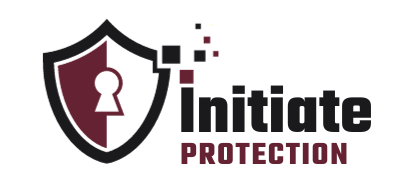Welcome, dear reader, to the world of data breaches – a growing concern that affects us all in this digital age. From personal information to financial data, our sensitive data is constantly at risk of being compromised by cybercriminals. In this article, we will explore the concept of data breaches and provide you with practical tips to safeguard your personal information. Don’t wait until it’s too late, empower yourself with knowledge and take control of your online security.
What Is a Data Breach?
A data breach refers to the unauthorized access of sensitive information, such as personal data, financial records, or intellectual property. This occurs when cybercriminals exploit vulnerabilities in a system or network to steal or manipulate data. The consequences of a data breach can include identity theft, financial loss, or damage to one’s reputation for both individuals and organizations.
To protect yourself, it is important to use strong and unique passwords, enable two-factor authentication, regularly update your software, and be cautious of suspicious emails or links. Additionally, regularly monitoring your accounts and credit reports can help detect any signs of a data breach. Remember to stay vigilant and practice good cybersecurity habits to safeguard your personal information.
What Are the Types of Data Breaches?
In today’s digital age, data breaches have become a common occurrence, making it more important than ever to understand what they are and how to protect yourself. There are multiple types of data breaches, each with its own unique characteristics and potential threats. In this section, we will discuss the four main types of data breaches: hacking or cyberattack, physical breach, insider breach, and accidental exposure. By understanding the different types of data breaches, you can better safeguard your personal information and minimize the risk of falling victim to a breach.
1. Hacking or Cyberattack
Hacking or Cyberattack
A hacking or cyberattack is a form of data breach where unauthorized individuals gain access to a computer system or network to steal, manipulate, or destroy data. To protect yourself from hacking or cyberattacks, follow these steps:
- Use strong and unique passwords for all of your online accounts.
- Regularly update your software and systems to patch security vulnerabilities.
- Enable two-factor authentication for an extra layer of security.
- Be cautious of suspicious emails and links, as they may be phishing attempts.
- Monitor your accounts regularly for any unusual activity or unauthorized transactions.
In a recent hacking incident, a major e-commerce company fell victim to a cyberattack, resulting in the compromise of sensitive customer data. The company responded quickly by notifying affected customers and implementing enhanced security measures to prevent future breaches.
2. Physical Breach
A physical breach is a type of data breach that occurs when unauthorized individuals gain physical access to sensitive information or devices. To protect yourself from physical breaches, follow these steps:
- Secure your physical environment: Lock doors and cabinets where sensitive information or devices are stored.
- Control access: Use keycards, biometric systems, or security guards to restrict access to sensitive areas, including those vulnerable to physical breaches.
- Monitor and track assets: Keep an inventory of all devices and ensure they are accounted for at all times.
- Dispose of sensitive information properly: Shred documents and securely erase data from devices before disposing of them.
Remember to regularly assess and update your physical security measures to stay ahead of potential breaches.
3. Insider Breach
An insider breach is a type of data breach that occurs when someone within an organization, such as an employee or contractor, intentionally or unintentionally exposes sensitive information. To protect against insider breaches, here are some steps to take:
- Implement strict access controls and limit employees’ access to sensitive data.
- Regularly monitor and audit employees’ activities, especially those with privileged access.
- Provide comprehensive training on data security policies and the consequences of insider breaches, also known as insider threats.
- Encourage reporting of any suspicious behavior or potential insider threats.
- Regularly update and enforce strong password policies for all employees to prevent insider breaches.
4. Accidental Exposure
Accidental exposure is a type of data breach that occurs when sensitive information is unintentionally disclosed or made accessible to unauthorized individuals. To minimize the risk of accidental exposure, follow these steps:
- Implement data classification policies to identify and categorize sensitive data.
- Train employees on proper handling and protection of sensitive information.
- Encrypt sensitive data to prevent unauthorized access in case of accidental exposure.
- Regularly update systems and software to patch vulnerabilities that could lead to accidental exposure.
- Conduct regular audits and assessments to identify any potential weaknesses in data handling processes.
By taking these precautions, you can reduce the likelihood of accidental exposure and protect sensitive data from falling into the wrong hands.
What Are the Common Causes of Data Breaches?
In today’s digital age, data breaches have become a common occurrence, leaving sensitive information vulnerable to cybercriminals. But what exactly causes these breaches? In this section, we will explore the most common causes of data breaches, including weak passwords, outdated software and systems, lack of encryption, and human error. By understanding these causes, we can better protect ourselves and our valuable data from falling into the wrong hands.
1. Weak Passwords
Weak passwords are a common vulnerability that can lead to data breaches. To protect yourself, follow these steps:
- Create strong passwords: Use a combination of uppercase and lowercase letters, numbers, and special characters to ensure your password is difficult to guess.
- Make passwords unique: Avoid using the same password for multiple accounts to prevent all of your accounts from being compromised if one password is discovered.
- Use a password manager: This tool can generate and securely store complex passwords for you, making it easier to have unique and strong passwords for each account.
- Enable multi-factor authentication: This adds an extra layer of security by requiring additional verification, such as a code sent to your phone, to access your account.
- Regularly update passwords: Change your passwords periodically to minimize the risk of compromise and keep your accounts secure.
2. Outdated Software and Systems
Using outdated software and systems increases the risk of data breaches. Outdated software lacks the latest security patches and updates, leaving vulnerabilities that hackers can exploit. Similarly, outdated systems may have weak security protocols or lack modern encryption methods, making them easier targets for cyberattacks.
To mitigate this risk, organizations and individuals must regularly update their software and systems to ensure they have the latest security measures in place. This includes updating operating systems, applications, and firmware, as well as using up-to-date antivirus software. By prioritizing software and system updates, individuals and organizations can significantly reduce the likelihood of experiencing a data breach caused by outdated software and systems.
3. Lack of Encryption
One of the leading causes of data breaches is the lack of encryption, where data is left vulnerable and unprotected from unauthorized access. Encryption is the process of converting data into a code to prevent unauthorized users from accessing it. Without encryption, sensitive information can be easily intercepted and exploited. Therefore, it is crucial for organizations to implement strong encryption measures to safeguard data, especially during transmission or storage. Prioritizing encryption as part of data protection strategies is essential for minimizing the risk of data breaches and protecting individuals’ privacy. According to a study by Ponemon Institute, 54% of organizations experienced a data breach due to the lack of encryption in 2020.
4. Human Error
Human error is a common cause of data breaches and can have significant consequences. Mistakes such as sending sensitive information to the wrong recipient, falling for phishing scams, or mishandling data can lead to breaches. To reduce risks, it is crucial for employees to undergo proper training on data security protocols, including handling sensitive information and identifying potential threats. Implementing strict access controls and monitoring systems can also aid in preventing unauthorized access and detecting any unusual activity. Organizations must prioritize creating a culture of cybersecurity awareness and providing ongoing education to minimize the possibility of human error causing data breaches.
A real-life example of the impact of human error on data breaches occurred in 2019 when a healthcare organization experienced a breach. An employee accidentally sent an email containing patient information to the wrong recipient, compromising the personal and medical data of thousands of patients and raising serious privacy concerns. This incident emphasized the need for proper training and vigilance in handling sensitive information to prevent data breaches caused by human error.
What Are the Signs of a Data Breach?
In today’s digital age, data breaches are becoming increasingly common and can have serious consequences for individuals and businesses alike. But how can you tell if your personal information has been compromised? In this section, we will discuss the signs of a data breach to help you recognize and respond to potential threats. From unusual account activity to unexpected charges, we’ll cover the key indicators that your data may have been breached. Additionally, we’ll also touch on the importance of paying attention to notifications from companies regarding possible data breaches.
1. Unusual Activity on Accounts
Unusual activity on accounts can be a sign of a data breach. If you notice any suspicious activity, take immediate action to protect yourself:
- Change your passwords for the affected accounts.
- Enable two-factor authentication for extra security.
- Contact the company or financial institution to report the activity.
- Monitor your accounts regularly for any further signs of unauthorized access.
- Consider setting up credit monitoring services to detect any fraudulent activity.
To further protect yourself from data breaches, stay vigilant, and follow these suggestions:
- Regularly update your passwords and use strong, unique combinations.
- Keep your software and systems up to date with the latest security patches.
- Be cautious of suspicious emails and refrain from clicking on unknown links.
2. Unexplained Charges or Transactions
Unexplained charges or transactions on your accounts can be a sign of a potential data breach. If you notice any suspicious activity, here are some steps you can take to protect yourself:
- Immediately report the unauthorized charges to your bank or credit card company.
- Change your account passwords to prevent any further unauthorized access.
- Keep a close eye on your accounts for any additional fraudulent activity.
- Consider placing a fraud alert or freeze on your credit report to prevent identity theft.
Pro-tip: Regularly reviewing your account statements and setting up alerts for unusual activity can help you quickly detect and respond to potential data breaches.
3. Notifications from Companies about a Breach
When you receive notifications from companies about a breach, it’s crucial to take immediate action to protect your personal information. Here are steps you can follow:
- Contact the company: Reach out to the company to confirm the breach and gather more information about which data may have been compromised.
- Change passwords: If the breach involved login credentials, change your passwords for that company’s accounts and any other accounts where you used the same password.
- Monitor accounts: Keep a close eye on your financial accounts and credit reports for any suspicious activity or unauthorized charges.
- Enable fraud alerts: Consider enabling fraud alerts with credit reporting agencies to receive notifications if someone tries to open an account in your name.
- Stay vigilant: Be cautious of phishing attempts or scams related to the breach, as cybercriminals may try to take advantage of the situation.
Here’s a true story: I received a notification from a popular online retailer informing me of a data breach. I immediately contacted them, changed my password, and closely monitored my accounts. Fortunately, I found no unusual activity, but the experience taught me the importance of being proactive in safeguarding my personal information.
How Can You Protect Yourself from Data Breaches?
In today’s digital age, data breaches have become increasingly common and pose a threat to our personal information. However, there are steps we can take to protect ourselves from falling victim to these attacks. In this section, we will discuss the various ways you can safeguard your data and personal information. From using strong and unique passwords to monitoring your accounts regularly, we will cover all the necessary precautions to keep your information safe from data breaches.
1. Use Strong and Unique Passwords
Protecting yourself from data breaches is crucial, and one way to do so is by using strong and unique passwords.
- Create complex passwords by combining uppercase and lowercase letters, numbers, and special characters.
- Avoid using easily guessable information such as your name, birthdate, or common words.
- Use a different password for each online account to prevent a single breach from compromising multiple accounts.
- Consider using a password manager to securely store and generate complex passwords.
- Regularly update your passwords and avoid reusing old ones.
Fact: According to a study by Verizon, 81% of data breaches in 2020 were caused by compromised passwords.
2. Keep Software and Systems Up to Date
Keeping your software and systems up to date is crucial in protecting yourself from data breaches. Here are some steps to follow:
- Regular Updates: Install software updates promptly to ensure you have the latest security patches.
- Patch Management: Utilize a patch management system to automate updates across all of your devices.
- Operating Systems: Keep your operating system up to date, as older versions may have vulnerabilities.
- Antivirus Software: Install and regularly update antivirus software to detect and remove malware.
- Firewall Protection: Enable firewalls on your devices to block unauthorized access.
By following these steps, you can significantly reduce the risk of data breaches and protect your personal information.
3. Enable Two-Factor Authentication
Enabling two-factor authentication is a crucial step in protecting your online accounts from data breaches. Here are some steps to enable two-factor authentication:
- Go to your account settings.
- Look for the security or privacy section.
- Find the option to enable two-factor authentication.
- Select your preferred method of verification – usually, it’s either through a text message, an authenticator app, or a physical security key.
- Follow the prompts to set up and verify your two-factor authentication.
- Once enabled, you will need to provide an additional verification code along with your password each time you log in.
It’s important to remember that two-factor authentication adds an extra layer of security to your accounts, making it much more difficult for hackers to gain unauthorized access.
In 2015, two-factor authentication saved the day for a journalist whose email account was compromised. The hacker attempted to reset the password, but the journalist’s two-factor authentication prevented the login. The journalist was alerted to the breach and immediately took action to secure the account. Thanks to two-factor authentication, the hacker was unable to access sensitive information or cause further damage.
4. Be Cautious of Suspicious Emails and Links
When it comes to protecting yourself from data breaches, it’s crucial to be cautious of suspicious emails and links. Here are some steps to follow:
- Be vigilant: Scrutinize emails from unknown senders or those requesting personal information.
- Verify sources: Double-check email addresses and hover over links before clicking.
- Don’t download attachments: Be wary of unexpected attachments, as they may contain malware.
- Be Cautious of Suspicious Emails and Links: Use spam filters to help identify and block suspicious emails.
- Educate yourself: Stay informed about common phishing techniques to recognize and avoid them.
Remember, cybercriminals often use email and links as entry points for data breaches. Stay alert and protect yourself online.
5. Monitor Your Accounts Regularly
Regularly monitoring your accounts is crucial for detecting any signs of a data breach and taking immediate action. Here are steps to help you in this process:
- Set up account alerts: Enable notifications for any unusual activity or changes in your accounts.
- Review statements: Regularly check your bank and credit card statements for any unauthorized charges or transactions.
- Monitor credit reports: Keep an eye on your credit reports for any suspicious activity or accounts opened in your name.
- Check for breach notifications: Stay informed about any data breaches by regularly checking for notifications from companies you have accounts with.
- Use monitoring services: Consider using credit monitoring services that can alert you to any potential breaches or suspicious activity.
Frequently Asked Questions
What is a data breach and how does it happen?
A data breach is an incident where sensitive or confidential information is accessed, stolen, or used without authorization. This can happen due to cyber attacks, human error, or system glitches.
What are the potential consequences of a data breach?
The consequences of a data breach can vary, but they often include identity theft, financial loss, damage to personal or professional reputation, and legal repercussions. It can also result in disruption of services and significant financial costs for the affected company.
How can I protect myself from a data breach?
There are several steps you can take to protect yourself from a data breach:
- Use strong, unique passwords for all your accounts and change them regularly.
- Enable two-factor authentication whenever possible.
- Be cautious when sharing personal information online and only provide it to trusted sources.
- Regularly monitor your financial accounts and credit reports for any suspicious activity.
- Keep your devices and software updated with the latest security patches.
- Use a reputable antivirus and firewall software.
What should I do if I think my information has been compromised in a data breach?
If you suspect your information may have been involved in a data breach, you should:
- Change your passwords immediately.
- Contact your bank and credit card companies to place a fraud alert on your accounts.
- Monitor your accounts and credit reports closely for any suspicious activity.
- Consider freezing your credit to prevent any new accounts from being opened in your name.
- Report the breach to the appropriate authorities, such as the Federal Trade Commission or local law enforcement.
How can companies protect themselves from data breaches?
Companies can take several steps to protect themselves from data breaches:
- Implement strong security measures, such as firewalls, antivirus software, and encryption.
- Regularly update and patch their systems and software.
- Train employees on proper data handling and security protocols.
- Conduct regular security audits and risk assessments.
- Have a response plan in place in case of a breach.
What laws and regulations are in place to protect individuals in case of a data breach?
The General Data Protection Regulation (GDPR) and the California Consumer Privacy Act (CCPA) are two major laws that aim to protect individuals in case of a data breach. These laws require companies to inform individuals about the breach and take appropriate measures to secure the affected data.





